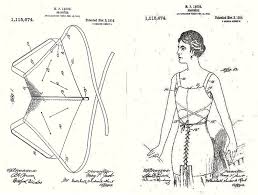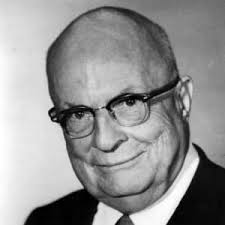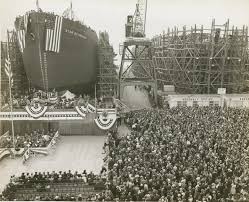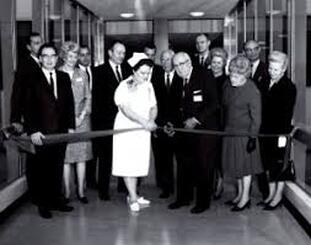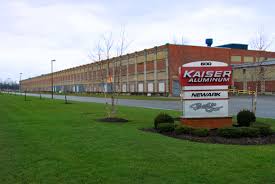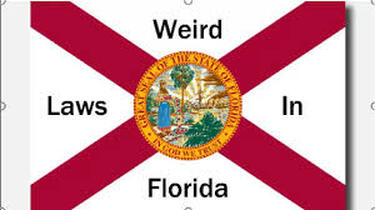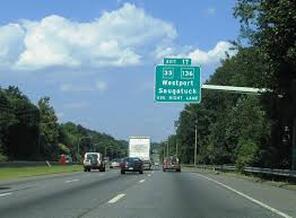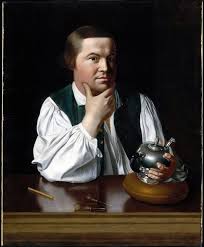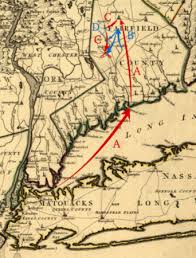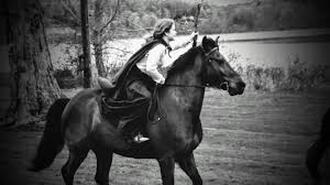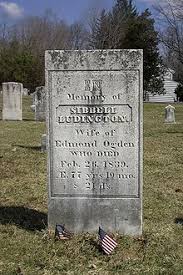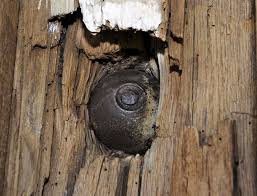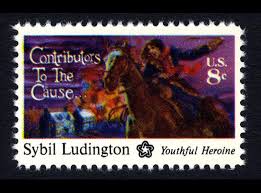|
Hear this here: EXIT of the Day: I-95 westbound EXIT 16 to Cedar Street, New Rochelle, New York "Just like America in the spring of 2020 with runs on toilet paper and bleach, in the early part of the 1900’s New Rochelle suffered a National Emergency which resulted in shortages and eventually even Rationing. The result was not all bad — especially for women. It was called the bra. In the 1800’s, society women bound themselves into rib cracking corsets to look beautiful. By the turn of the 20th century, women longed to abandon the “it hurts to be beautiful” mentality. They dreamed of comfort. According to Women's Wear Daily magazine, by 1910 New Rochelle's own 19 year old socialite Mary Phelps Jacob had had enough. The prick of inspiration occurred from exactly that - a painful prick. One evening, as she was dressing for yet another debutante party, she noticed that whale bone and metal were sticking out of her corset and showing through the sheer fabric of her gown. It cramped her waist and pricked her body. She asked her maid for silk handkerchiefs and some ribbon and crafted an undergarment that was not only comfortable, it also separated her big breasts and gave her the silhouette of a woman instead of the body of a cello. Mary's new undergarment complemented the new fashions of the time. She was mobbed after the debutante dance by other girls who wanted to know how she moved so freely. When she showed her new garment to friends the next day, they all wanted one. Always precocious, Mary filed for a patent for her invention in February 1914 and in November the United States Patent and Trademark Office granted her a patent for the 'Backless Brassiere'. Soon, after she married a fellow New York aristocrat and World War One veteran, Harry Van Renssaler Crosby, Mary began selling it under her somewhat coy new moniker, "Caresse Crosby". Eventually she even adopted the name herself. She in effect became Carresse Crosby. Later Caresse and her husband Harry Crosby moved to Paris and would become leading evangelicals of the 1920’s Lost Generation and were pals with F. Scott Fitzgerald and Ernest Hemingway with whom, in Pamplona, they would run with the bulls… … but that story awaits another EXIT. Unlike the usual stiff armor, the modern bra was lightweight, soft, and feminine. It was the first bra to gain widespread acceptance, though it didn’t become really popular until the United States entered World War One in 1917. That was when American Women were asked to stop buying corsets in order to help conserve metal. So thanks to rationing and World War 1, women never went back to corsets. Who would think the success of the bra was linked to the country's world war? #NewRochelle #Covid19 #Rationing #BlackSun #CarresseCrosby #Bras An Immigrant's Legacy: The 1st Vaccine for COVID-19This week in Seattle, Kaiser Permanente was first to develop and test-vaccinate 44 volunteers to immunize against the Coronavirus. The first human guinea pig to be vaccinated was Jennifer Haller, a tech worker and mother of two. Americans owe all involved a debt of gratitude. Since World War 2, companies created by the late Henry Kaiser have been in the forefront of many industries. So today we explore a prominent landmark which drivers can see from Interstate 95 and which — like the COVID-19 Vaccine — is the legacy of an American Immigrant… EXIT OF THE DAY: EXIT 67A I-95s to: Bellwood, Virginia Off to the left you can see a factory. It is a Kaiser Aluminum Plant. The founder of Kaiser Aluminum was an immigrant who rose from very humble beginnings. Born in 1882 to German immigrants, Henry’s mom was a homemaker and his father was a shoemaker. Although in time he would become one of America’s wealthiest citizens, he did not forget his impoverished origins. From the high seas to Healthcare, Henry Kaiser pioneered many firsts. An inveterate tinkerer and a stickler for efficiencies, Kaiser became known as the father of modern American shipbuilding. On the west coast, he established the Kaiser Shipyards, which during World War Two built Liberty Ships launching almost one freighter a day. Liberty Ships were essential as merchant ships to supply the far flung war efforts and which kept beleaguered allies like Britain and Russia supplied with weapons and food. After getting a contract to provide ships to the US military during World War two, he began to worry about his workers lack of health care. To provide affordable care and economies of scale for his thousands of ship-builders Kaiser took over the local Permanente Hospital in Oakland, California. Therefore, Kaiser Permanente (now Kaiser Permanente Thrive) became the first voluntary group plan in the country to feature group medical practice, prepayment, and comprehensive medical facilities on a large scale. Kaiser's Healthcare became a forerunner to company health plans and pioneered today's HMO's. After the war, Kaiser founded Kaiser Aluminum by leasing and later purchasing surplus aluminum facilities in Washington state from the United States government. Buying huge factories cheap and running them lean made him a wealthy man. With his wealth, he established the Kaiser Family Foundation, a nonprofit, non-partisan, charitable organization which focused on health care issues. While the man, Henry Kaiser, died in 1967, his intrepid legacy lives on in this trail blazing Foundation which is not associated with Kaiser Permanente nor Kaiser Industries. In fact, the Kaiser Family Foundation operates independently as a think tank; it makes facts and analysis available to policymakers, health care groups, and the media. A leading authority on many issues, The Foundation echoes its founder’s nature. Both valued independent thinking and innovation. So apart from hulking factories, the Kaiser Family Foundation and Kaiser’s various medical companies continue to be the best legacy in Henry Kaiser's life. #HenryKaiser #KaiserHealthCare #KaiserShipBuilding #KaiserAluminum #KaiserFamilyFoundation #LibertyShips #WWII #Industrialist #Philanthropist #COVID19VACCINE #FirstCOVID19Vaccines #Coronavirus Road Test Upcoming! Now the Fast Facts...EXIT of the Day: Hear this here… I-4, EXIT 108s onramp I-4S: To Valdez, Deltona FL “Ok Road Trippers, as we approach Deltona, it is time for a Road Test. This Road Test is brought to you by Joe’s Gas and Convenience Store 1 minute off upcoming Exit 108. If you get the answer correct, you can get a "Buy 1 Get 1 Free" deal of any Pepsi or Dorito Product with a fill up of fuel above $15. So get right to exit. Now listen to the Fast Facts! There are some ridiculous laws on the books in the state of Florida. We did some research and found some of the silliest. Many of these laws are only in effect in certain cities. So for example, selling fruit in one city is all right but you could spend hard time if you cross the county line. Up in Destin, Florida please don't set off any torpedoes. It's illegal there. Not sure about the rest of the state, but they have a problem with torpedoes in Destin. Must be a lot of large alligators or something. Also Good to know: in all of Florida, men are not allowed in public wearing a strapless dress. As long as you've got straps of some sort, you're cool. Also, in Destin, it is illegal for an ice-cream man to sell ice cream in a cemetery. But what’s really weird, in Hialeah, strolling or ambling is a misdemeanor. Still all that’s nothing compared to selling certain fruits in Miami. In Miami, you could face up to 30 days in jail for selling oranges on the sidewalk. And don't even think about showering naked! It's an actionable offense. Maybe the cops perp walk you with your handcuffs in front.... Raincoats must be popular round here. And as if people do not have enough outdoor activities to entertain them, in Daytona Beach, you're banned from molesting trash cans. In Key West, don't molest the chickens. They're a protected species. But they need to hear that in Key West… Finally, here is one that does make sense. In the state of Florida, it's illegal to have physical relations with a porcupine. Ouch! But maybe you can have relations with a chicken outside of Key West. The State Law is not clear on that issue. And finally, in case you are riding down the interstate on Jumbo, know this: When you tie it to a parking meter, your elephant gets charged just the same as your car would. Now for the Road Test. How many days do you get in jail for selling Grapefruits in Miami? You have three seconds. 3…2…and 1. The answer is "No time." You get no time in jail. That’s because it is only illegal to sell Oranges. Now go park your elephant and feed the meter. And when you visit upcoming Deltona, no romancing porcupines. Pervert! Oh and go get your "Buy 1 Get 1 Free" Deal of Pepsi or Doritos at Joe’s. Just tell em RoadSpoke’s Silly Laws sent you!” #sillyFloridalaws #Roadtrippers #FastFacts #Jumbo #ParkingElephants #Florida #Snowbirds The Midnight Ride of Sybil LudingtonHear the Here: Road Test! EXIT 17 to Westport, CT Hi. Hello. Ok, listen up kids! Upcoming is a Road Test but first the Fast Facts: Paul Revere is well known. Much of that is thanks to the Henry Wadsworth Longfellow poem entitled “The Midnight Ride of Paul Revere” published about 80 years later in 1861. Not many people know that there was a young girl who did the exact same thing, but much much better. That’s because, unlike Paul who was caught after 16 miles and imprisoned by the Brits, she finished her gallop a free teen. This is the story of a girl of sixteen who rode 40 miles to New York warning towns and minute men all along the way. But who beyond local school kids have heard of her? Typical right? The man gets all the press. Anyways, on a dark and rainy night in April 1777, the British invaded Fairfield County landing on beaches from ships off Westport. Sybil Ludington mounted her horse, Star, and galloped into sorta history. During the Revolutionary War, Connecticut's agricultural output led to it being known as "the Provisions State”. In 1777, the British Commander-in-Chief, General William Howe in New York City ordered an officer, William Tryon to interrupt the flow of supplies from Connecticut that were reaching the Continental Army around British New York City. Tryon led a fleet of 26 ships carrying 2,000 men to Westport's Compo Beach to raid Continental Army supply depots 20 miles north up in Danbury. That’s when Sybil galloped to New York to alert the militia. Though they arrived too late to save Danbury from burning, the New York militia later dislodged the British at the Battle of Ridgefield. Most importantly, Sybil’s ride and the British incursion galvanized neutral citizens to join the American cause. In the days after Tryon sailed away from Compo Beach, approximately 3,000 Connecticut Citizens joined Washington’s Continental Army. Now for the Road Test: how many miles did Sybil gallop? And how many did Paul Revere gallop? If you said 40 and 16 — congrats. You would be correct! And Sybill deserves more credit! #SybilLudington #PaulRevere #WestPort #CampoBeach #RevolutionaryWar #WilliamHowe
0 Comments
Leave a Reply. |







